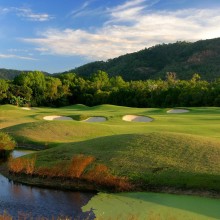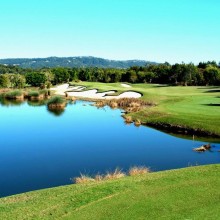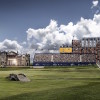Our 5 Favourite Years of The Masters Tournament
By Quantum, March 28
5. 19862 of 7

The 1986 Masters
Even without the 46-year-old Jack Nicklaus’ heroics, this would have been a great Masters. Big name players like Seve Ballesteros and Greg Norman were both in contention as were Tom Watson, Tom Kite and Payne Stewart. Not forgetting Nick Price became the first player to shoot 63 in the Masters.
Jack Nicklaus, winner of 72 PGA Tour titles and 17 major championships heading into the 1986 season was considered by many as the greatest golfer of all time. However, 17 major championship is where most people thought Nicklaus would stay. He hadn’t won a tournament in two years, and he hadn’t won a major in six.
After some solid golf that week and with 10 holes left in the final round, Nicklaus was four shots back and looked likely to pick up a solid finish.
But conserving a solid finish never entered Nicklaus’ mind. He made birdies on 9, 10 and 11 to leave himself just two back. It was at this moment that people began to ask if Nicklaus could really win this golf tournament at the grand age of 46.
Nicklaus’ momentum was halted with a bogey on 12 and a surge from his competitors. He countered with a birdie at 13, but a Seve Ballesteros eagle at the same hole left Nicklaus four shots behind with four holes to play.
On 15 Nicklaus hit a glorious, towering 4 iron to 15 feet, he took his time and then sank the eagle putt to a deafening roar from the thrilled gallery. Now with three holes to play he was two behind Ballesteros.
The golden bear continued his momentum into the 16th. He hit his ball hit just short of the hole, it spun left and almost went in for an ace. The crowd sensing they were witnessing a pivotal moment in golf history provided the noise to match.
Nicklaus added another birdie at 17 and a par at 18 to finish off with a final-round 65. He had played his last 10 holes in 7 under par producing some of the loudest cheers ever heard at a golf tournament. But it wasn’t over yet. Ballesteros, one ahead of Nicklaus at the time, stood in the 15th fairway with a four-iron and a chance to go for the green in two. Incredibly Ballesteros struck his approach into the water short and then made another bogey on 17 to all but end his chances.
Next was the young Tom Kite, who was still looking for his first major. His putt to tie Nicklaus on 18 was in the hole all the way until it slid by the left edge at the last second. Nicklaus had dodged two bullets but he still had one more to go.
Greg Norman was the last player to stand between Nicklaus and glory. Birdies at 14, 15, 16 and 17 tied him for the lead, and Norman had a four-iron approach to the final green and a chance to win or force a playoff. But the Aussie’s attempt found the gallery and resulted in a bogey. Nicklaus was the champion.
Not only had Nicklaus put on possibly the greatest charge in tournament history, but he also had held off a pack of hungry and talented opponents in the process. It was the cherry on top of a glittering career from whom many consider the greatest player of all time.
Image credit to Masters.com.
More from Golf in Queensland:








